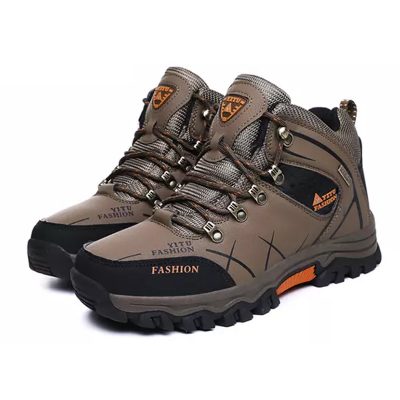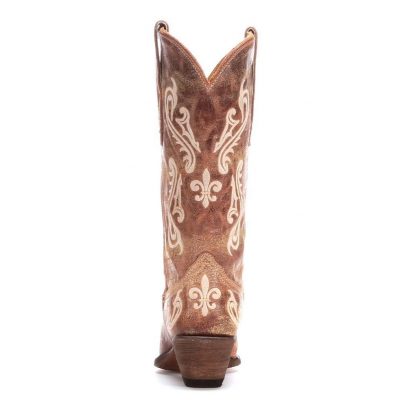Statistical analysis of industrial accidents conducted by the Government Labour Department in 1997 showed that 36% of the total 43,305 work-related injuries were caused by things such as stepping on, touching, or being hit by objects, and the feet are often the hardest hit areas of work injuries. . In addition, we are accidentally crushed by falling objects when handling splashes caused by hot or corrosive substances and during manual handling, which can also damage our feet. How can we reduce the chance of an employee’s foot injury during work? Wearing suitable protective shoes is one of the simple and effective methods. Of course, we must still bear in mind that the use of “personal protective equipment” should not be regarded as a substitute for engineering or administrative control methods to deal with hazards.
The current occupational safety and health laws in Hong Kong still do not clearly stipulate that employees in a certain occupation or process must wear protective shoes before construction. However, it is not difficult for us to find from different industries (such as construction, catering, container storage and transportation, and ship construction, etc.) that many employees have the habit of wearing protective shoes to work. At present, the management or employers of many organizations clearly understand that work-related accidents cause losses to companies or individuals, including human resource damage, property damage, and work schedule delays. This causes a decline in productivity and affects competitiveness in the market. Therefore, they have taken the initiative to purchase labor insurance shoes for their employees without any legal requirements. The Housing Authority also intends to vigorously promote the safety shoes movement in its sites.
However, if the protective function of labor insurance shoes is to be fully exerted, it is necessary to pay more attention to the selection, use and maintenance. The following pages will give a more detailed explanation of the above three points.
Know the standards of labor insurance shoes
Different regions and countries have slightly different specifications for labor insurance shoes. The more common standards are as follows.
1. European Common Market Safety Standards (EN344.1:1992)
According to the testing methods and specifications of this standard, safety shoes can be divided into 3 types:
.EN345.1:1992: Professional safety shoes, with a steel plate built into the toe, can prevent an impact equal to 200 joules (J).
. EN 346.1: 1992: Professional protective shoes, built-in steel sheet in the toe, can prevent the impact equal to 100 joules (J).
.EN347.1:1992: Work shoes for professional use, there is no steel sheet in the toe cap.
2. American Standard (ANSI-Z41-1991)
According to the shoes’ resistance to compression and impact, safety shoes with protective toe caps can be divided into three types.
3. Australian Standard (AS/NZS 2210.1:1994)
This standard divides labor insurance shoes into 4 types, including:
.Heavy work safety shoes
.Mid-sized work safety shoes
.Light work safety shoes
.Waterproof safety shoes
4. People’s Republic of China National Standard
.G.B.4014-83 leather safety shoes
.G.B.7054-86 rubber surface anti-smashing safety boots
5. Japanese standard (J1S-T-8015: 1983)
Nowadays, the safety shoes that are dumped on the market in Hong Kong are mainly from Europe. Therefore, the content of this article will be based on the European Common Market Safety Standards.
Choose suitable safety shoes
Before choosing, we must first understand the main hazards that cause direct or indirect injuries to the feet of employees, including the following 6 items:
1. Being touched by a hard, rolling or falling object.
2. The sole or body of the shoe is pierced by a sharp object.
3. Being cut by sharp objects, or even tearing the epidermis.
4. The ground is lubricated and falls.
5. Surfaces in contact with chemicals, molten metals, high and low temperatures.
6. Working in an environment full of flammable gas, if the discharge of static electricity is not handled properly, it will become a source of combustion at any time and cause an explosion. In addition, the electrical conductivity of the feet can also affect the level of electric shock hazards when employees touch electric devices.
After knowing these information, it is helpful to carry out the analysis work of choosing labor insurance shoes.
When choosing, the following factors must be carefully considered:
1. Construction environment, such as:
. Is the venue slippery?
. Is the venue uneven?
. Are there many wooden bars with nails or other sharp obstacles nearby?
2. Contact materials, such as:
. Corrosive chemicals.
. Hot liquid.
. Bulk and difficult to handle goods or rollers, etc.
3. Machines and equipment used or contacted, such as:
. Electrical installations.
. Fork lift trucks.
. Sharp hand tools.
4. Process, such as:
. Dump chemicals.
. Handling high temperature liquids.
. Welding work.
. Human handling.
After careful analysis, try to list the items that can directly or indirectly endanger the foot safety of employees during the entire operation. Then make selections from the following points related to the materials and design of labor insurance shoes to meet the protection you or your employees need in construction.
1. The material of the sole
There are common rubber, vulcanized rubber, or polyvinyl chloride.
. The main function of the sole is wear resistance, chemical resistance, heat insulation and oil resistance, but due to the different characteristics of the materials, the functions are also different.
·The interlayer of the labor insurance shoes is equipped with a steel sheet, which functions to prevent the sole from being pierced by nails or hard objects.
. In addition, shoe soles made of certain materials can reduce the generation of static electricity or slow down the speed of static discharge. This can control the possibility of explosion or fire caused by static electricity.
2. Sole design
In addition to using non-slip rubber soles, the design of the sole is also very important for the anti-slip function.
3. The material of the shoe body
Leather, artificial leather, polyvinyl chloride and synthetic fibers are common. Each of these substances has advantages, such as:
. The leather shoe body is more durable and wearable, and it is more comfortable to wear, but the function of resisting corrosive liquid damage is not good.
. Artificial leather can be used in the case of waterproof, corrosive chemicals or other pollutants, but if its surface is damaged, its function will be affected.
. Polyvinyl chloride is more suitable for wet and slippery environments, and it is also easy to clean, but it can be decomposed by some chemicals.
.Shoes made of synthetic fibers are easier to clean and can resist the decomposition of chemicals.
4. The design of the shoe body
With reference to European standards, there are the following 5 styles.
A. shoes;
B. Ankle boots;
C. Half knee boots;
D. Knee boots;
E. Leg boots.
5. Toe cap selection
The toe cap of the safety shoes is equipped with a steel cap. The main function is to protect the toes from being bruised or crushed. If employees need to perform heavier tasks, such as construction workers or employees who carry heavy goods, the materials for the steel caps of their labor protection shoes must have corrosion resistance and impact resistance of 200 joules (J).
Comprehensively have a better understanding of the hazards that cause foot injuries, and analyze the environment, materials, mechanical tools and construction methods of the operation, try to confirm the relevant matters and hazards to the foot safety of employees, and try to use engineering and Administrative methods are the first to control them. If the harm is not effectively reduced, the use of protective shoes will be inevitable.
Refer to the labor insurance shoe information provided above, and consult safety professionals, labor insurance shoe manufacturers or suppliers, etc., and make appropriate matching, so as to give users sufficient protection. Following this process, in conjunction with relevant publicity, training and monitoring, is the basic model of a foot safety protection plan, applicable to all walks of life.
The use and maintenance of safety shoes
Correct use and maintenance methods can ensure that the safety shoes should be effective and maintain the user’s foot health. Therefore, more attention should be paid to the following items:
1. Do not modify the structure of labor insurance shoes without authorization.
2. Wearing labor insurance shoes of the right size will help maintain the wearer’s foot health and the durability of the shoes.
3. Pay attention to personal hygiene. Users should keep their feet and shoes clean and dry.
4. Clean the protective shoes regularly, but solvents should not be used as cleaning agents. In addition, the soles must also be cleaned frequently to avoid accumulation of dirt. The conductivity or anti-static performance of the soles will be affected by the amount of dirt attached and the bending condition.
5. Store safety shoes in a cool, dry and well-ventilated place.
Once again, I would like to mention the rules of “personal protective equipment”:
1. It should not be used to replace engineering or administrative control methods to deal with hazards.
2. The personal protective equipment used must conform to the standard design and be suitable for the work needs.
3. In addition to the appropriate choice, correct use and maintenance are equally important to the function.
Under the Occupational Safety and Health Ordinance, the Government’s Labour Department is drafting regulations on “personal protective clothing”, which will strengthen the requirements for the use of personal protective equipment.



















